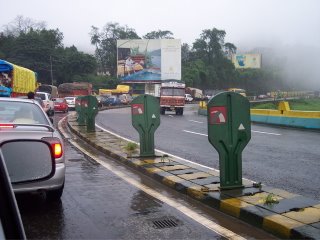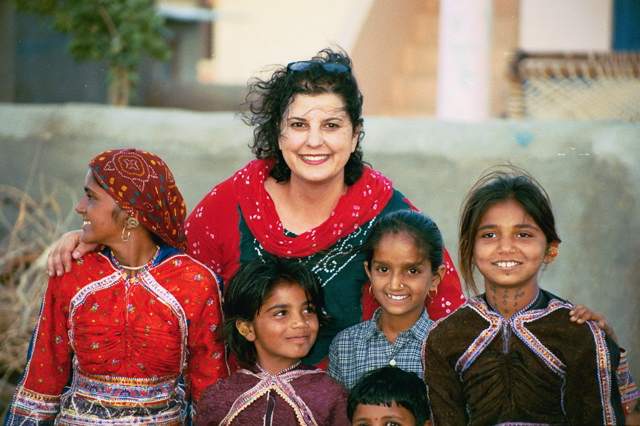
We left Pune for the five hour drive back to Mumbai. There was a four truck pile up on the mountain pass so we waited for ambulances, tow trucks and everyone to clear. Several people seemed to be hurt from the wrecks and we were grateful we were several cars behind the chaos, and our driver was very careful on the slick, wet mountain roads. A rare blessing for India. We also got to see some beautiful waterfalls with the rain coming down teh mountains. For a moment we pretended we were in Hawaii. Our trip to Pune was quite full of surprises and changes from the last time I was in Pune. The names IBM, Siemens, Infotechnology and many others were clearly evident in the new technology parks that have begun in the area. The low middleclass is growing and bringing rise to new problems as marriages are suffering and people are facing the challenges of whole communities working on the US and UK time zones. The good news is many workers have gone from working as handcraft producers to working in technology call centers. We have been meeting about the new needs here and are persuing working in some orphanages to give skills and work experience to older orphans 14-17. The couple in charge of the work group is also looking for other ways to help out their changing low caste and lower middle class. With family issues and marriage issues it seems work is not the only thing we are exporting to India. We have been joking all week that Susanne and I look more Indian than many here. The US wardrobe is becoming preferred by the college and young workers, and the struggle between the old and new India was more obvious here that in the less industrialized regions we visited last week.
 We left Pune for the five hour drive back to Mumbai. There was a four truck pile up on the mountain pass so we waited for ambulances, tow trucks and everyone to clear. Several people seemed to be hurt from the wrecks and we were grateful we were several cars behind the chaos, and our driver was very careful on the slick, wet mountain roads. A rare blessing for India. We also got to see some beautiful waterfalls with the rain coming down teh mountains. For a moment we pretended we were in Hawaii. Our trip to Pune was quite full of surprises and changes from the last time I was in Pune. The names IBM, Siemens, Infotechnology and many others were clearly evident in the new technology parks that have begun in the area. The low middleclass is growing and bringing rise to new problems as marriages are suffering and people are facing the challenges of whole communities working on the US and UK time zones. The good news is many workers have gone from working as handcraft producers to working in technology call centers. We have been meeting about the new needs here and are persuing working in some orphanages to give skills and work experience to older orphans 14-17. The couple in charge of the work group is also looking for other ways to help out their changing low caste and lower middle class. With family issues and marriage issues it seems work is not the only thing we are exporting to India. We have been joking all week that Susanne and I look more Indian than many here. The US wardrobe is becoming preferred by the college and young workers, and the struggle between the old and new India was more obvious here that in the less industrialized regions we visited last week.
We left Pune for the five hour drive back to Mumbai. There was a four truck pile up on the mountain pass so we waited for ambulances, tow trucks and everyone to clear. Several people seemed to be hurt from the wrecks and we were grateful we were several cars behind the chaos, and our driver was very careful on the slick, wet mountain roads. A rare blessing for India. We also got to see some beautiful waterfalls with the rain coming down teh mountains. For a moment we pretended we were in Hawaii. Our trip to Pune was quite full of surprises and changes from the last time I was in Pune. The names IBM, Siemens, Infotechnology and many others were clearly evident in the new technology parks that have begun in the area. The low middleclass is growing and bringing rise to new problems as marriages are suffering and people are facing the challenges of whole communities working on the US and UK time zones. The good news is many workers have gone from working as handcraft producers to working in technology call centers. We have been meeting about the new needs here and are persuing working in some orphanages to give skills and work experience to older orphans 14-17. The couple in charge of the work group is also looking for other ways to help out their changing low caste and lower middle class. With family issues and marriage issues it seems work is not the only thing we are exporting to India. We have been joking all week that Susanne and I look more Indian than many here. The US wardrobe is becoming preferred by the college and young workers, and the struggle between the old and new India was more obvious here that in the less industrialized regions we visited last week.




0 Comments:
Post a Comment
<< Home